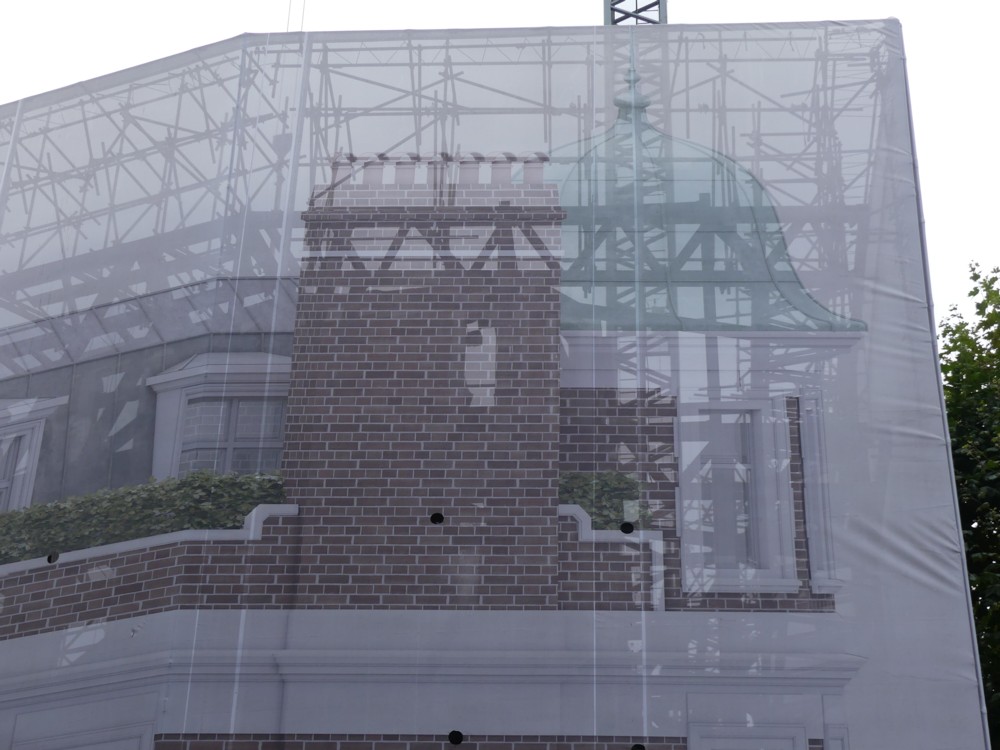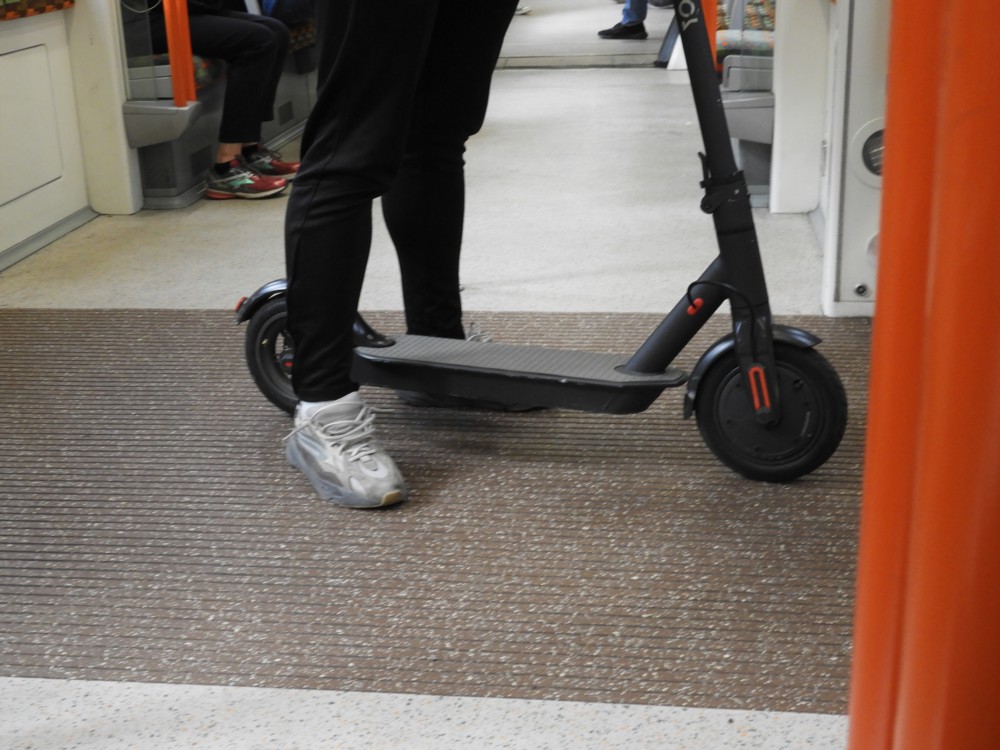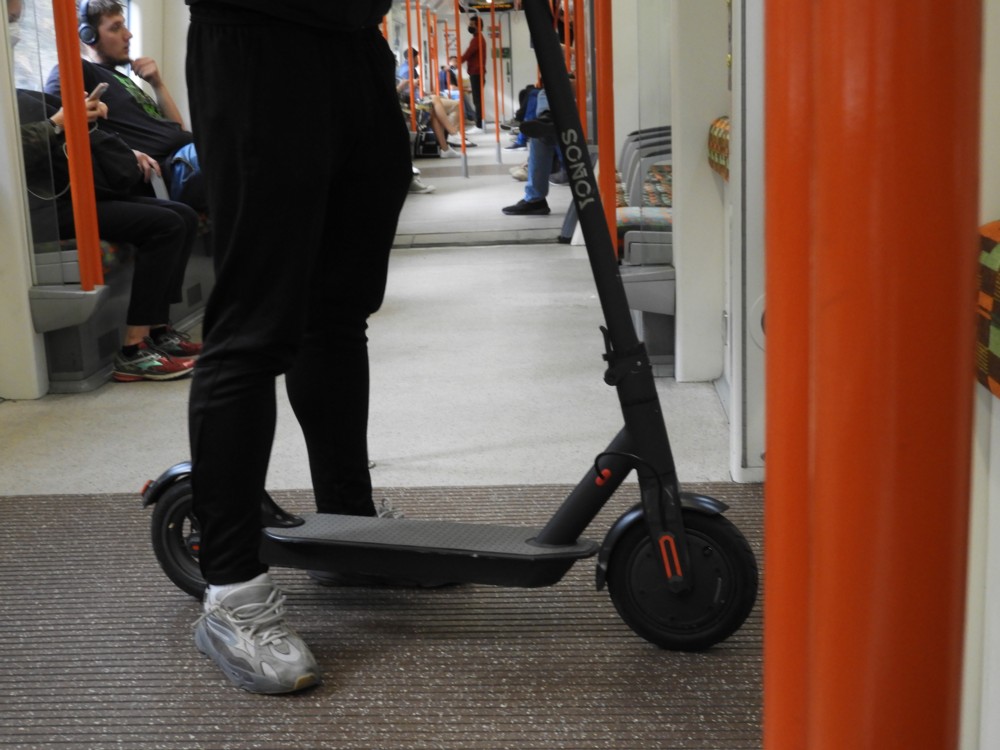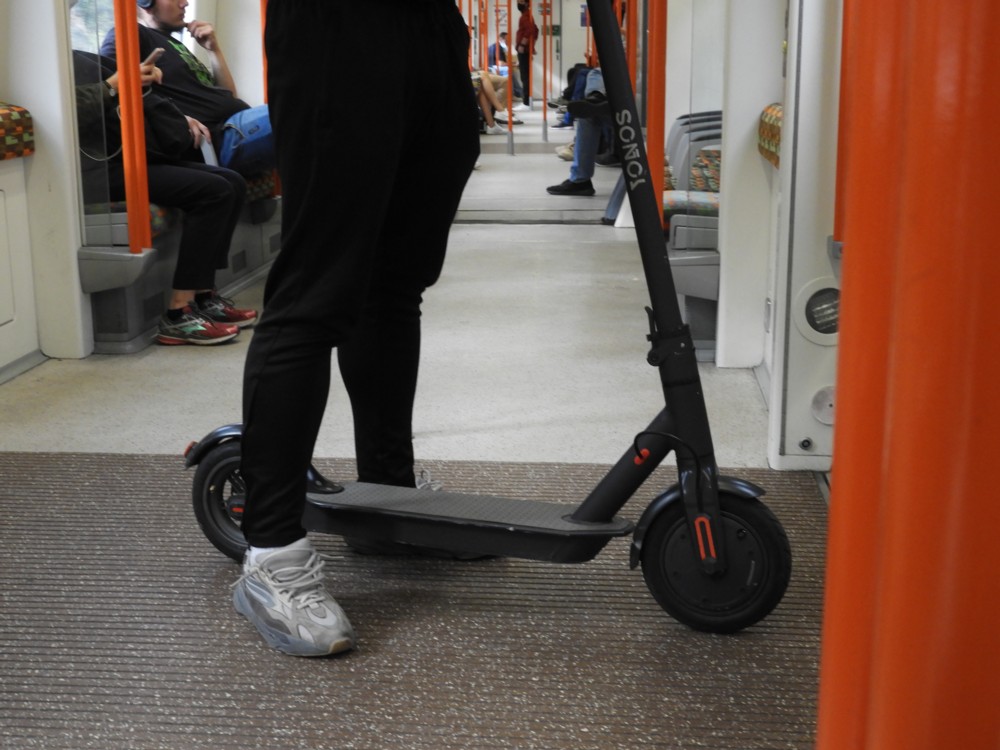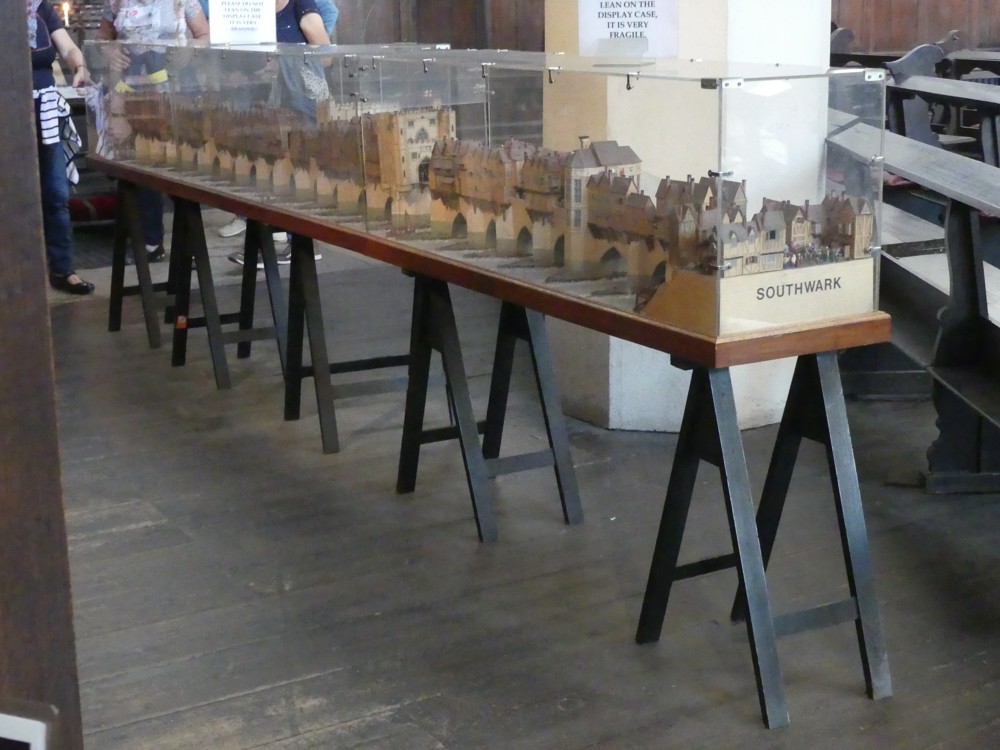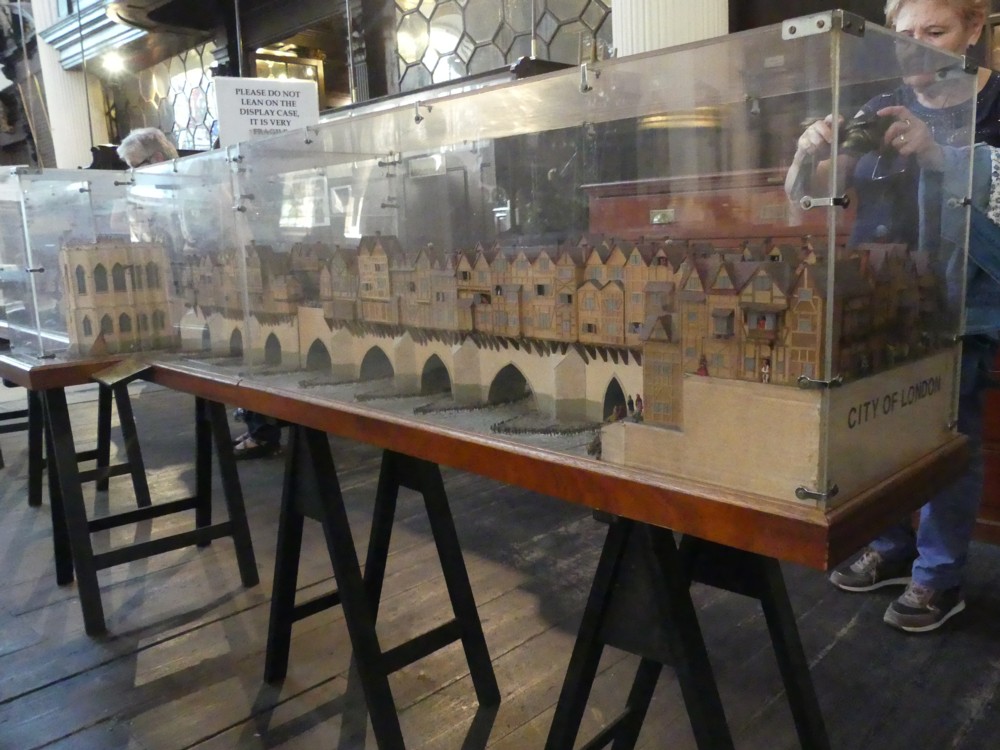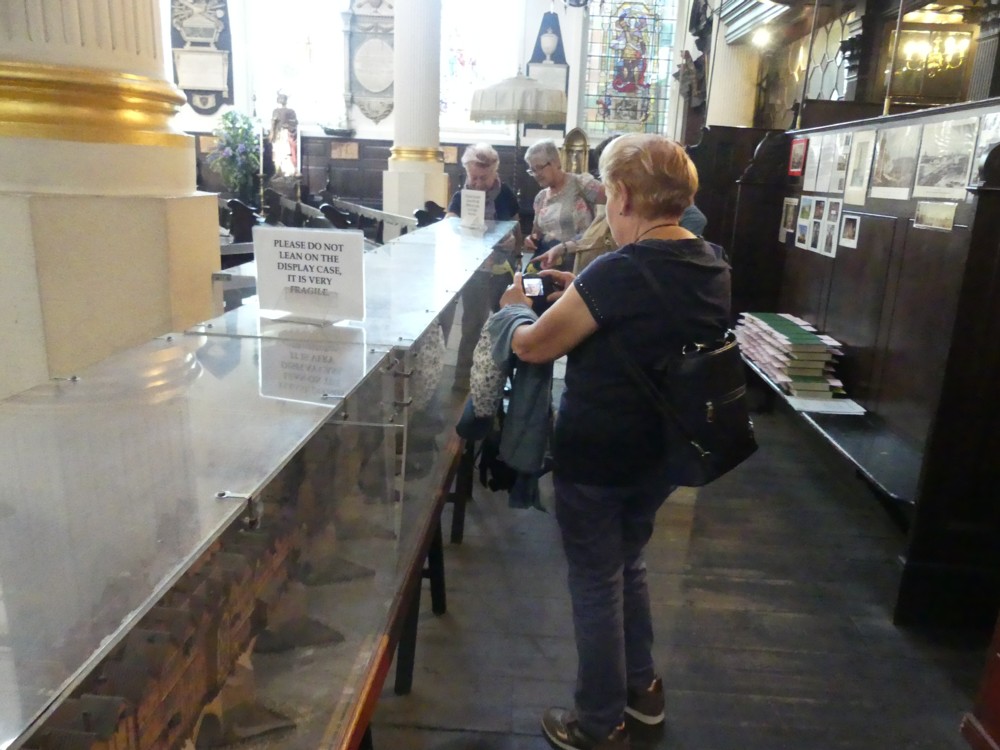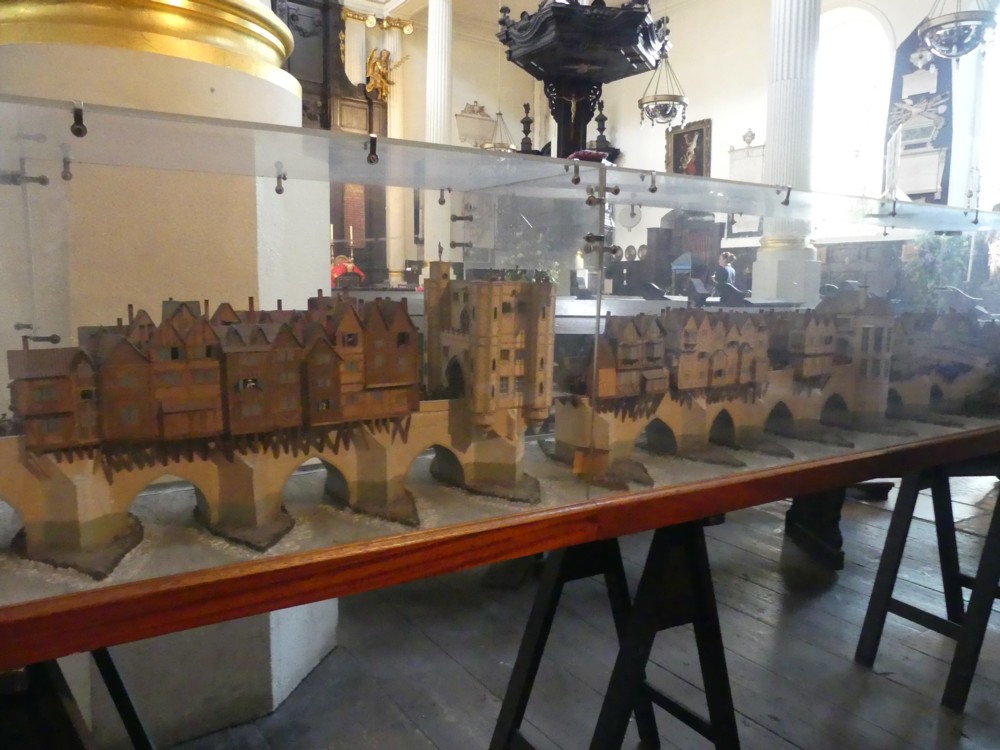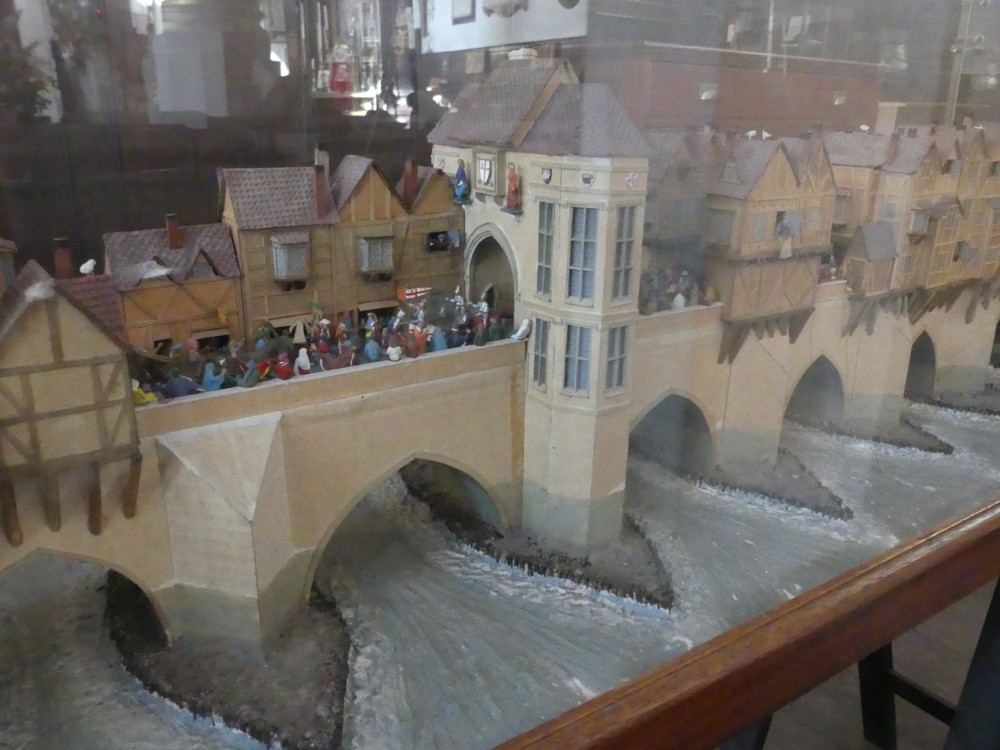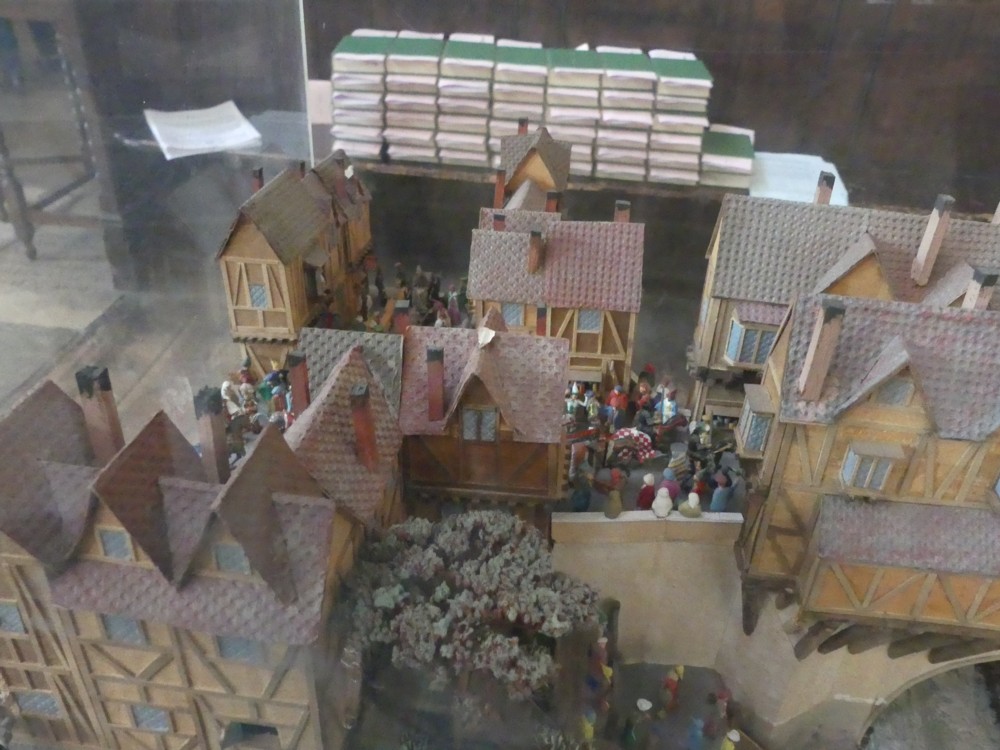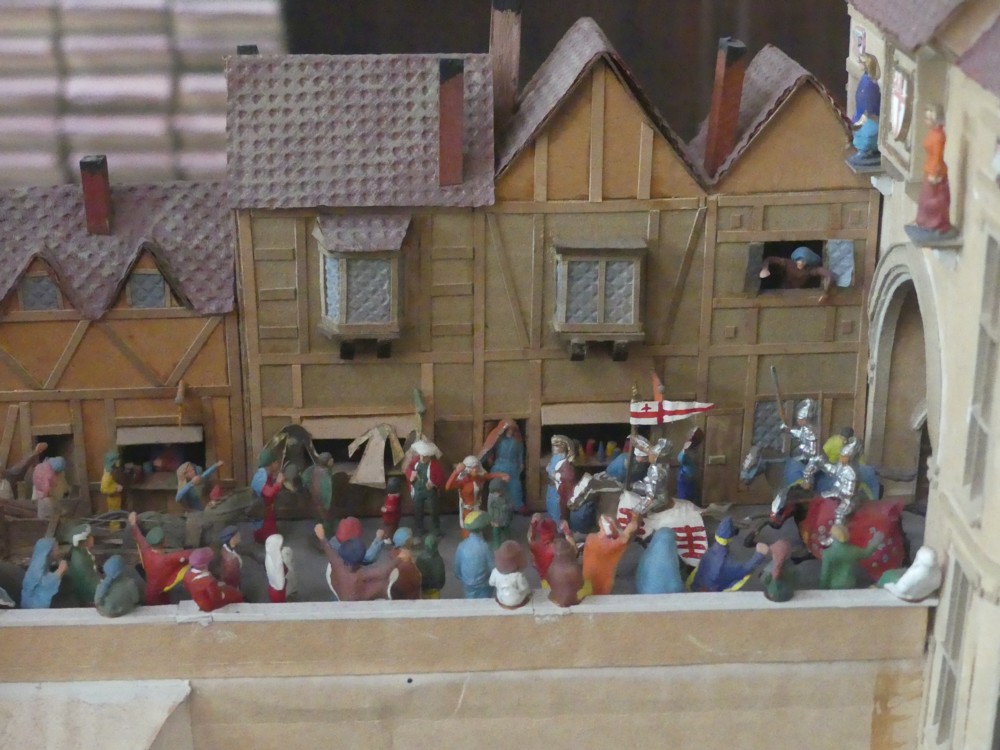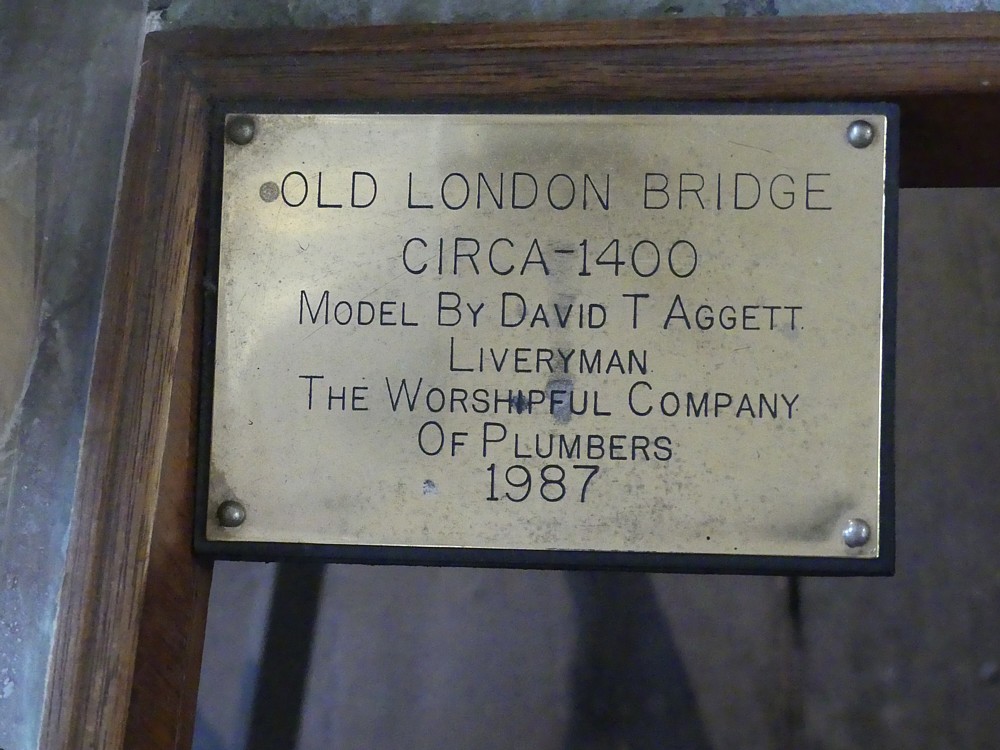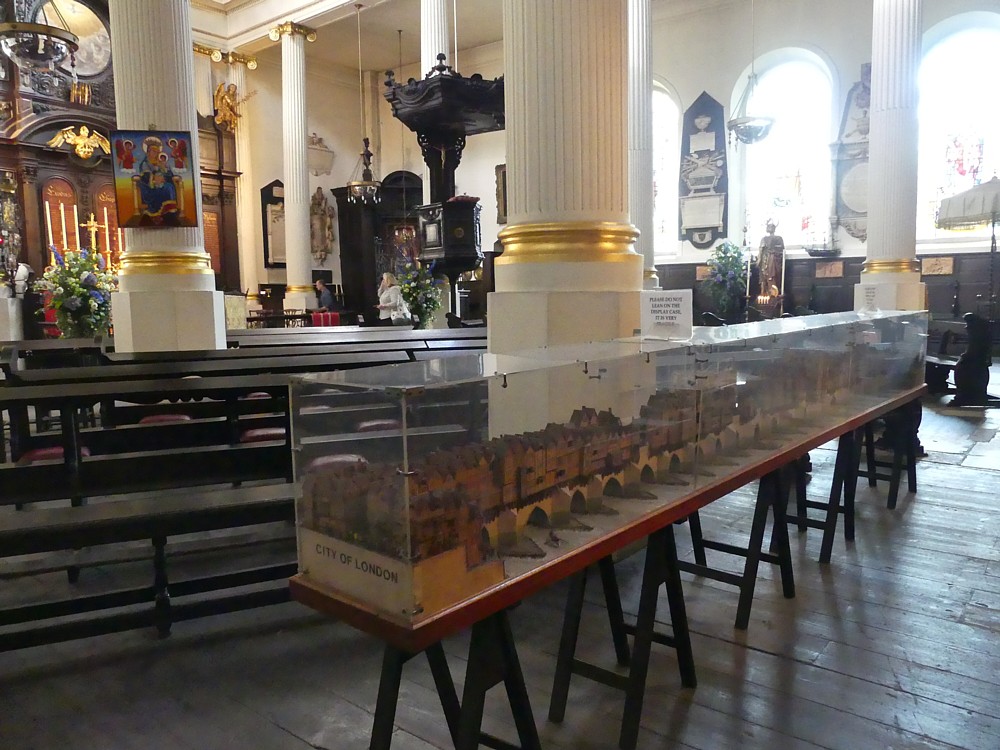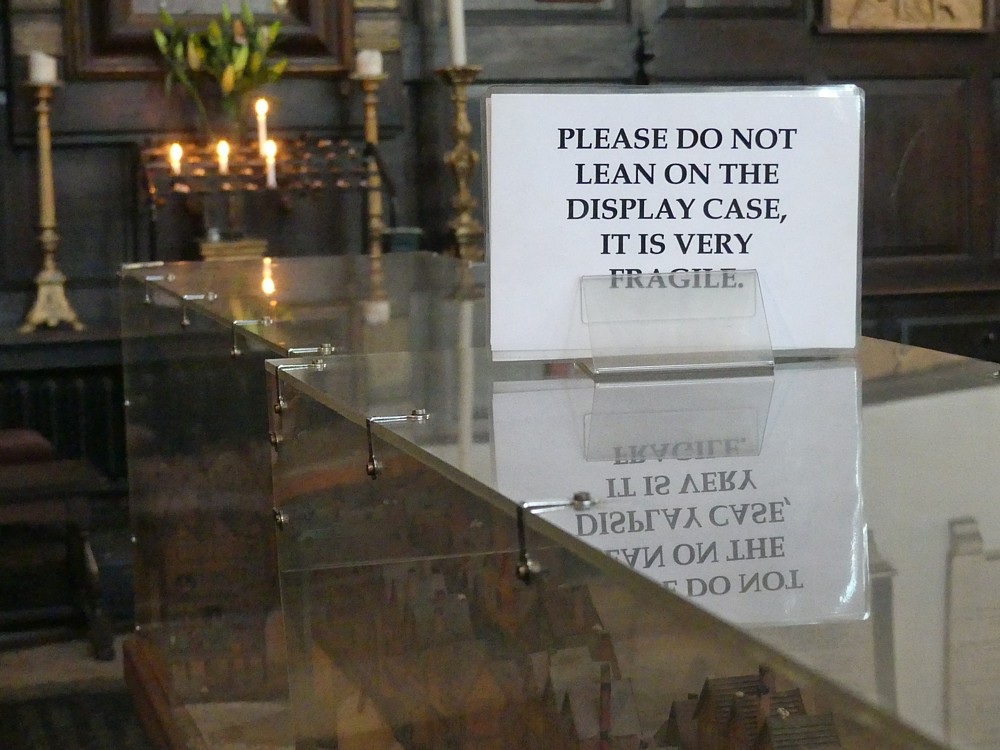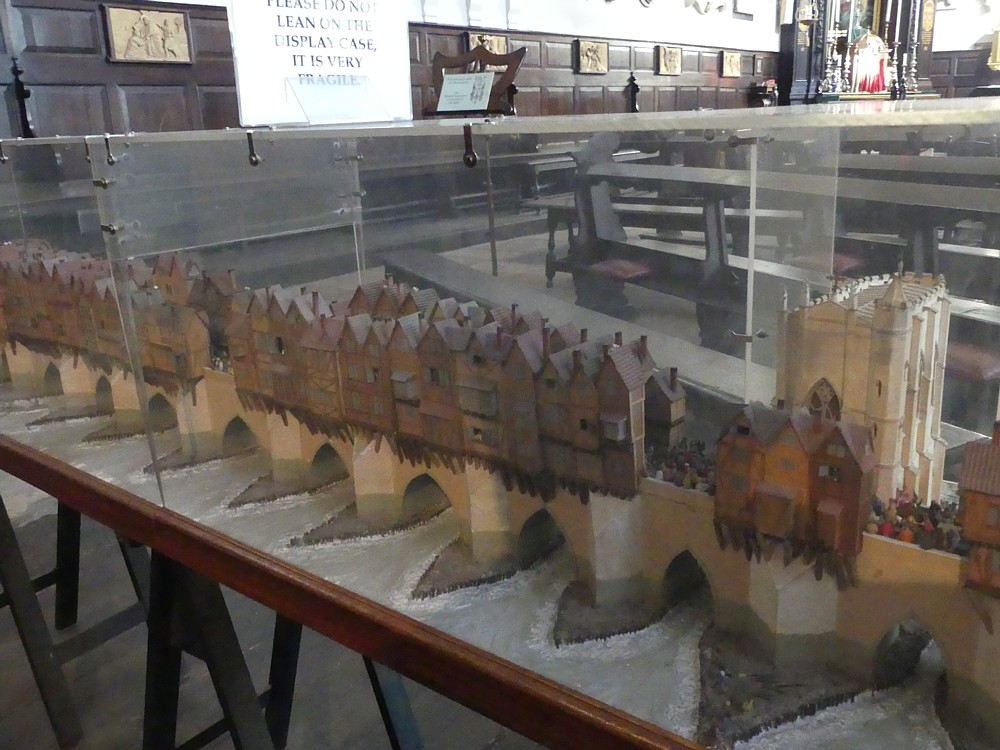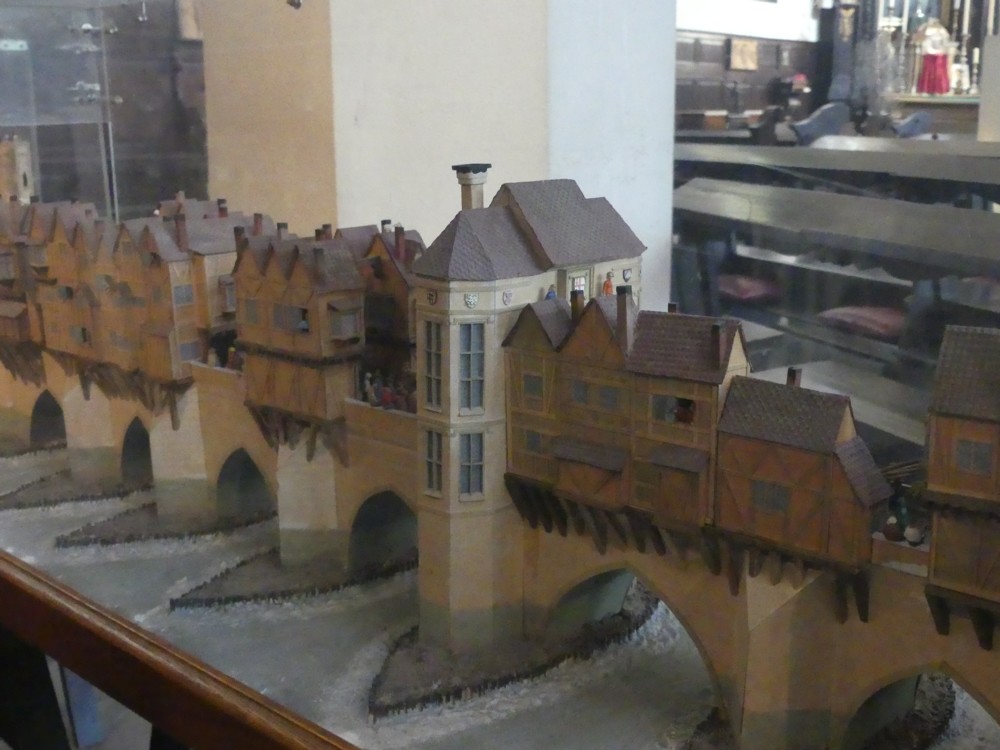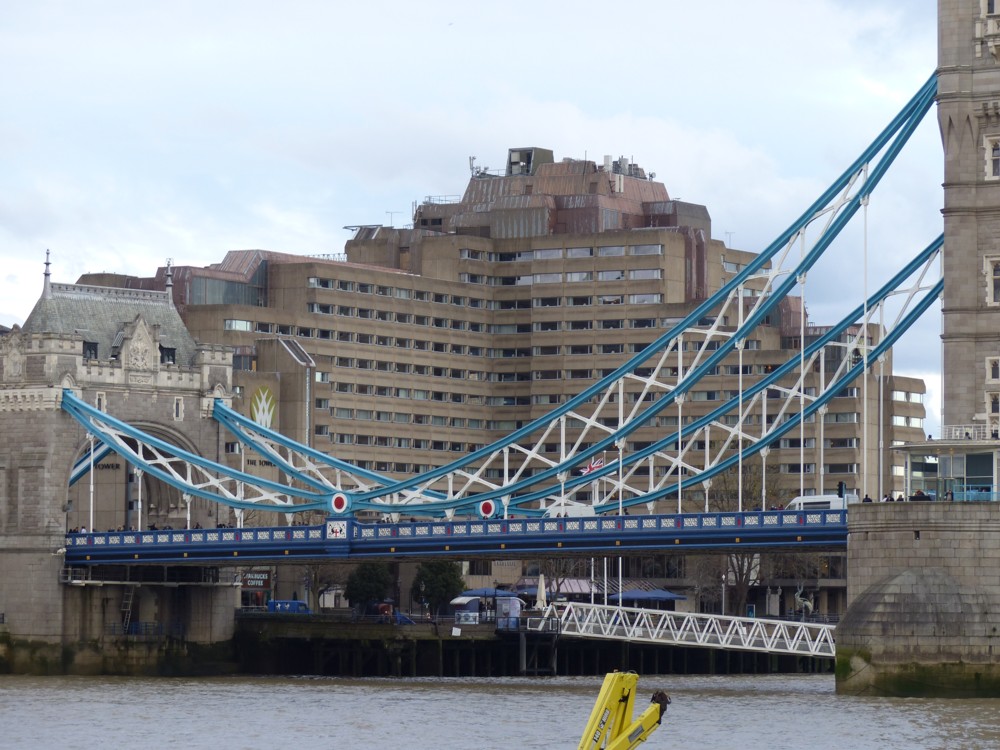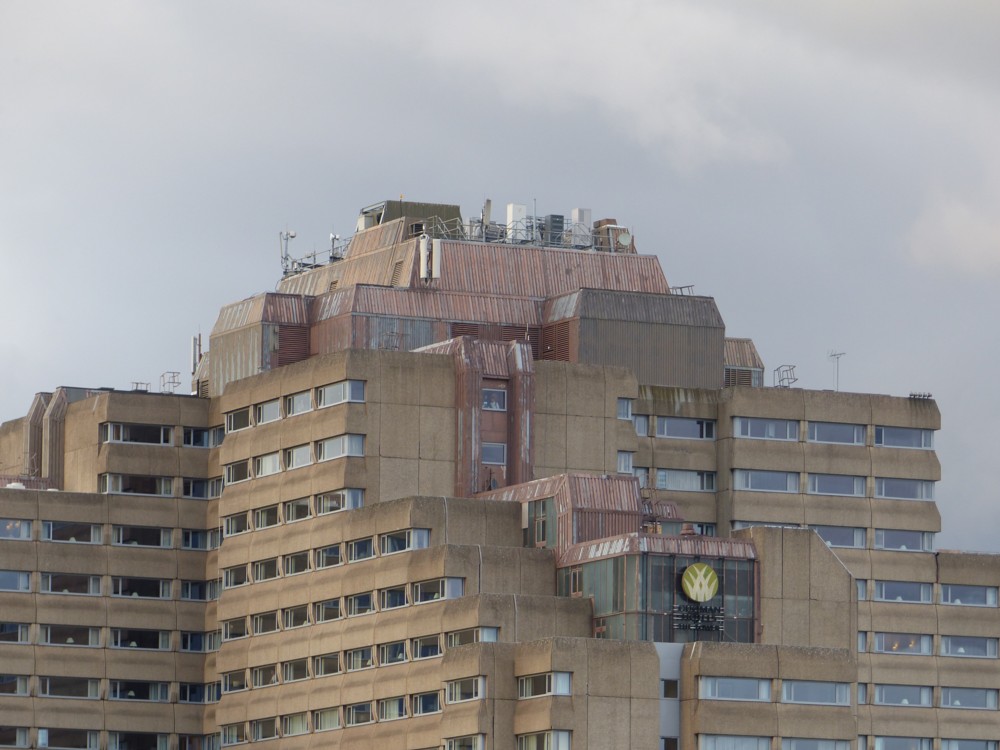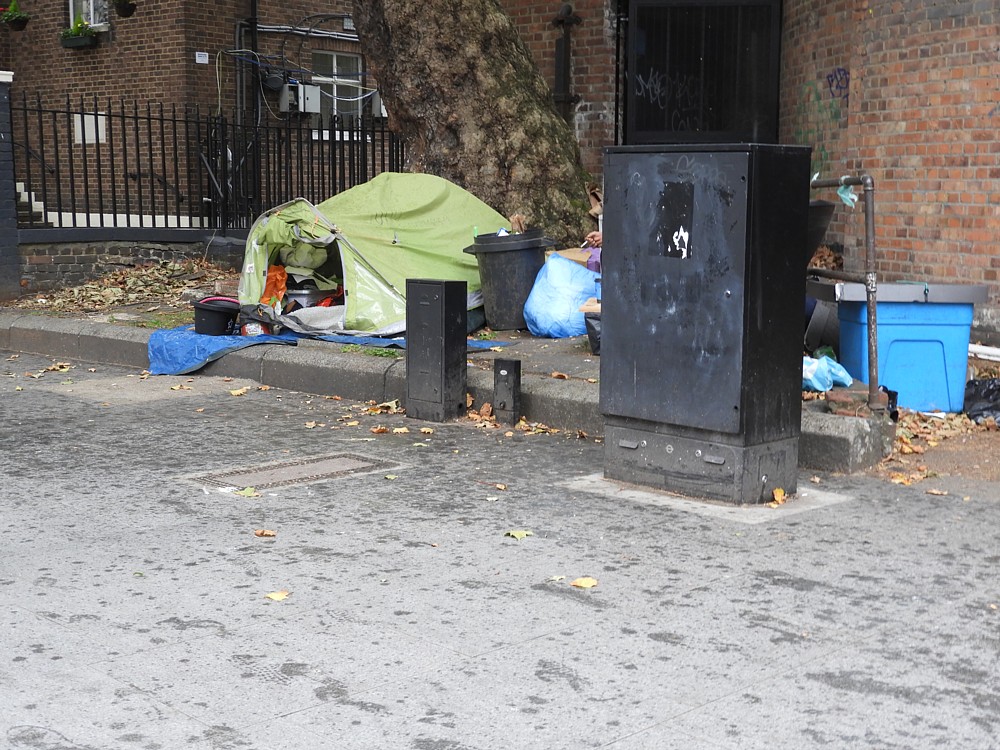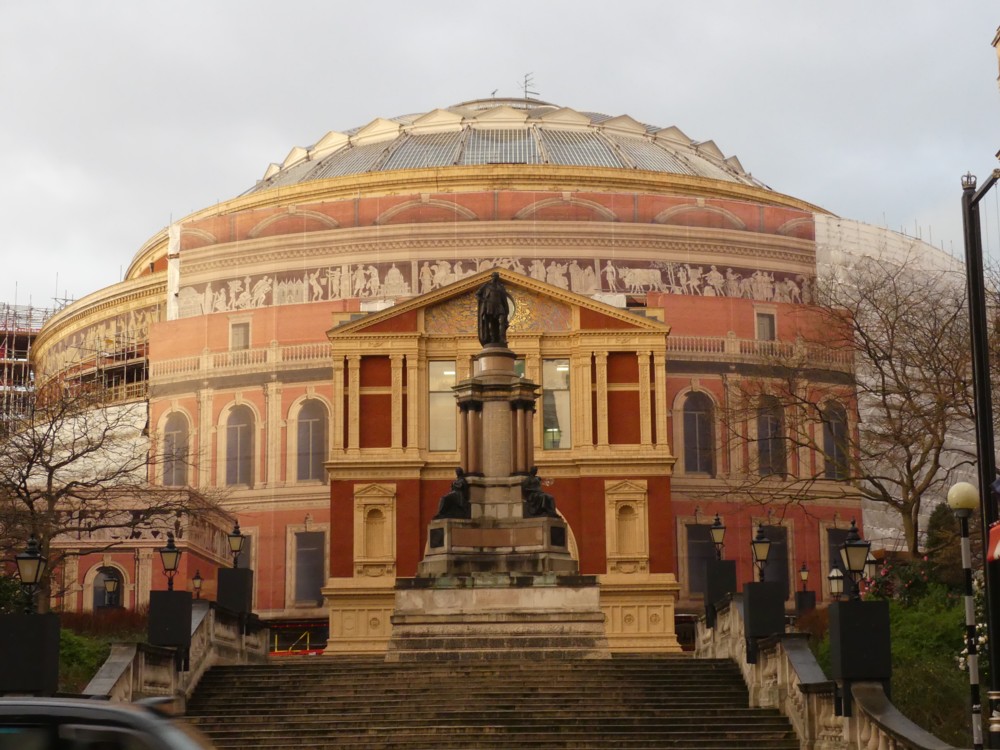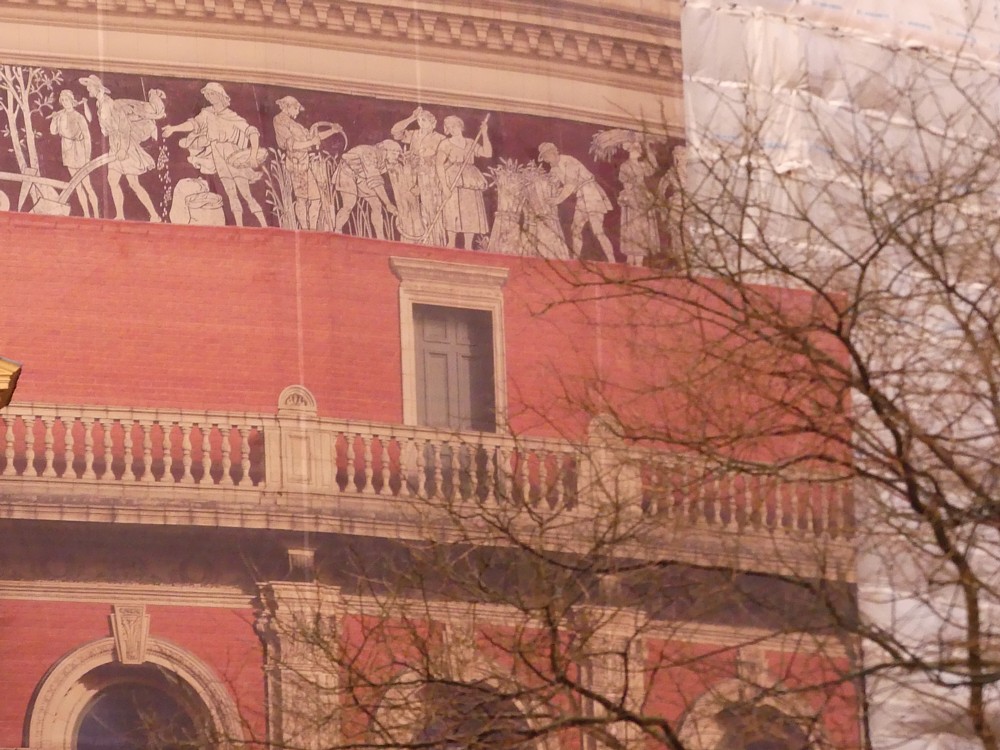One of the more frustrating of the photo-expeditions I have done in the last few years was one to the Church of St Magnus the Martyr.
I was there, around a year ago. to photo a model of Old London Bridge, which I had found out about in some way that I now forget. And the model was there. That wasn’t the frustration. What was the frustration was that photographically, this model pretty much defeated me. Although clearly visible and clearly identifiable for what it was, it was protected by the photographic equivalent of armour plating, in the form of a very shiny glass box.
I still took lots of photos, and from the selection of those that I now show you, you do get some idea of what sort of model this is and how it looks in its ecclesiastical surroundings:
The less these photos are about the details of the model and the more they are about the model as a whole and its surroundings, the better they are, and I biased my choice of what to post here I had in that direction. So they are worth a click through, if London’s eccentricities and oddities are of interest to you.
I image-googled this model, and the results were not as disappointing as my own efforts but still rather disappointing. This model has been there since 1987, but at no time, then or since, has anyone taken any really classy photos of it, or not any that the internet seems to be have been told about. (If commenters can prove me wrong, I’d be be very happy.)
There are some photos of this model, which are definitely better ones than mine from the point of view of showing the details of the Thing, here. But even that photoer struggled, I think. As did this guy.
It would be nice if this church were to pick itself a Real Photographer, and let him have a go at this Thing, with Real Photographer type lighting, with the glass temporarily removed, and maybe with some specially supplied backgrounds to screen out the church clutter, and also all the uneven light that crashes into the church through its church windows. Maybe let the RP take the whole Thing to a studio of some sort.
That would be nice for the likes of me. But maybe the people running this church already rather resent the number of godless tourists of my sort who already come tramping into their House of God to gawp at and and to photo this bridge model, and who then tramp out again, ever to be seen again unless they want more photos of the model. And the last thing they want is to encourage a whole new flood of such people. If my guess is right, I can’t say I blame them, but it is just a guess and I could be quite wrong.
I could find no reference to this London Bridge model at the church’s own website, but again, that could merely be because I am terrible at searching websites.
There is another picture of this church in an earlier posting I did here about the Monument, showing how near that edifice is to this church.

